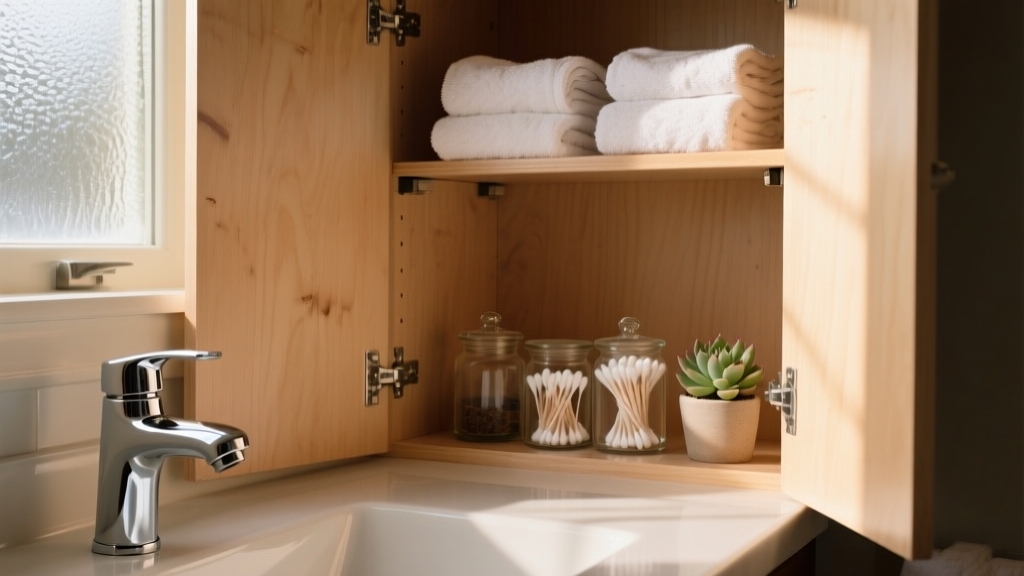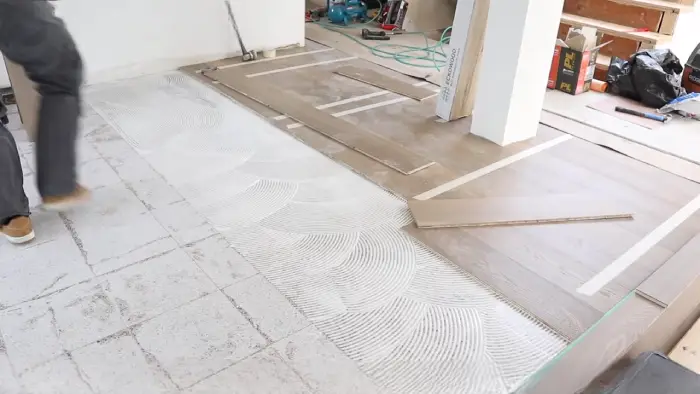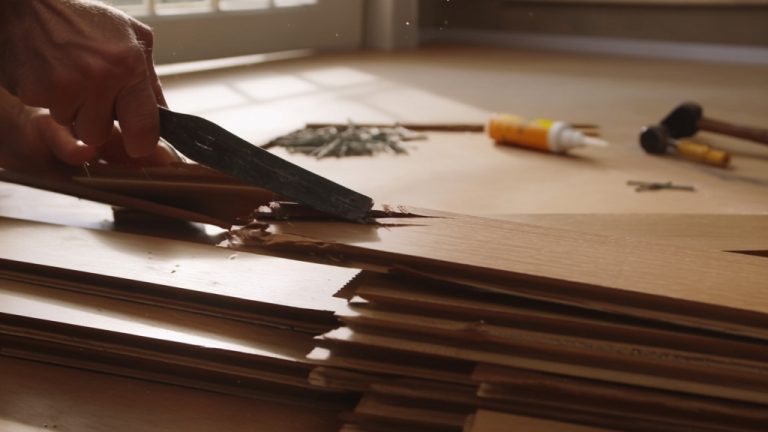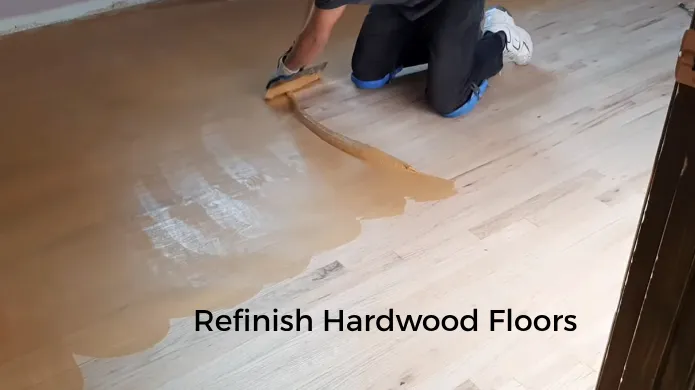How Deep Are Bathroom Cabinets: Create Seamless Sanctuary
Bathroom cabinets are typically about 21 inches deep, offering a great balance between storage space and room to move. If you have a smaller bathroom, shallower options around 12 to 18 inches help keep the area open and accessible while still providing practical storage.
You’ll want to take into account plumbing clearance and the cabinet’s aesthetic impact to maintain a seamless look. Explore how varying depths affect design, accessibility, and function to find the perfect fit for your space.
Key Takeaways
- Standard bathroom cabinet depths typically range from 18 to 24 inches, with 21 inches being the most common for balance and practicality.
- Shallower cabinets (12–18 inches) are ideal for small or narrow bathrooms to maintain open space and easy accessibility.
- Deeper cabinets (21–24 inches) offer more storage but may crowd small bathrooms and complicate plumbing access.
- Proper cabinet depth accommodates plumbing clearance, usually requiring about 12 inches inside the cabinet behind the sink.
- Cabinet depth choice should consider bathroom size, plumbing, storage needs, and accessibility for optimal function and aesthetics.
Standard Depth Ranges for Bathroom Cabinets
While bathroom cabinets come in various sizes, the standard depth typically ranges between 18 and 24 inches, with 21 inches being the most common choice.
This 21-inch depth strikes a perfect balance, offering ample storage without overwhelming your bathroom space. If you prefer something more compact, 18-inch depths serve well in tighter layouts, though these may limit storage. It is important to avoid excess moisture around cabinetry to prevent warping or damage over time.
On the other hand, some premium or custom vanities extend to 22 inches, providing extra room for your essentials. Remember, the cabinet depth doesn’t include the countertop overhang, which usually adds about 1.5 inches, creating a harmonious and functional total depth near 22.5 inches.
Choosing a standard depth guarantees your vanity fits well within typical plumbing setups and complements your overall bathroom design. Standard Depth Cabinets are considered the most common and suitable for bathrooms with average proportions, balancing functionality with space efficiency.
Depth Variations Based on Bathroom Size
Choosing the right bathroom cabinet depth depends largely on the size of your space.
The ideal bathroom cabinet depth hinges primarily on the dimensions of your room.
For compact bathrooms, shallow vanities ranging from 16 to 20 inches deep keep the room feeling open, especially an 18-inch depth for powder rooms or narrow layouts. These options create a minimalist look while maximizing floor space.
Note that standard bathroom cabinet depth typically ranges from 18 to 24 inches, so these shallower options are on the lower end of the scale. Regular maintenance and cleaning of bathroom spaces can help preserve their appearance and functionality.
Medium-sized bathrooms benefit from the standard 21-inch depth, offering balanced storage without crowding the area or disrupting traffic flow.
In larger master bathrooms, extended depths of 22 to 24 inches add luxurious storage and countertop space, fitting seamlessly into spacious designs without sacrificing comfort.
Always consider how far cabinets and drawers open and maintain at least 21 inches of walking space to ensure your bathroom remains functional and inviting.
Impact of Cabinet Depth on Storage Capacity
Have you ever noticed how deeper bathroom cabinets can really amp up your storage game? They allow you to neatly organize larger items and make the most of every inch inside. It’s a game changer, right? However, consider that deeper cabinets might require custom interior solutions to optimize accessibility and organization.
But here’s the catch: as the depth of your cabinet increases, reaching those items all the way at the back can get a bit tricky. That’s where smart interior solutions come in, like pull-out shelves or tiered compartments. They can really save the day!
Additionally, choosing the right cabinet depth based on your room size ensures both functionality and comfort in your bathroom.
Storage Volume Differences
Because bathroom cabinet depth directly influences storage capacity, selecting the right size guarantees your essentials fit neatly without overcrowding your space.
Standard depths around 21 inches strike a practical balance, storing daily items efficiently while fitting most bathroom layouts. Proper surface preparation, similar to surface preparation for painting, ensures functionality and longevity.
If you prefer compactness, 18-inch shallow cabinets hold basics like toilet paper and hand towels, ideal for smaller baths. Meanwhile, deeper 24-inch cabinets maximize storage, perfect for larger items and better organization.
Additionally, wall-mounted cabinets are typically shallower, ranging from 6 to 12 inches, providing versatile storage options without protruding too much into the room. Keep in mind, plumbing cutouts reduce interior usable space, so exterior depth doesn’t always equal storage volume.
Custom cabinets offer flexibility to optimize this. Ultimately, choosing the proper depth depends on your bathroom size and storage needs, ensuring your space feels open yet functional without sacrificing convenience or style.
Accessibility and Reachability
While deeper bathroom cabinets offer increased storage, they can substantially impact accessibility and reachability, especially if you or your guests have limited mobility.
Cabinets deeper than 20–24 inches often make it harder to reach items, restricting ease for those with limited arm extension. Using materials and finishes that provide better surface control can help improve usability in deeper cabinets.
ADA guidelines recommend vanities no deeper than 21 inches to balance storage with access, ensuring knee and toe clearances beneath sinks for wheelchair users.
Shallow cabinets around 16–18 inches promote clear walkways and better maneuverability in compact spaces, preventing cramped, awkward reaches. Remember, excessive depth can encroach on essential floor space, limiting mobility and violating accessibility standards.
Cabinet Interior Organization
When choosing the depth of your bathroom cabinet, consider how it directly affects your storage capacity and organization options.
Deeper cabinets (21–24 inches) offer more volume, letting you store bulkier items like towels and cleaning supplies neatly. They are often preferred in larger bathrooms to maximize storage while maintaining ergonomic comfort, as deeper vanities increase capacity.
Incorporating adjustable shelving in deeper cabinets also promotes better organization and accessibility. Shallow cabinets (16–18 inches) suit smaller essentials but limit flexibility.
To organize effectively, focus on these strategies:
- Use pull-out shelves or baskets in deeper cabinets to access items in back.
- Incorporate adjustable shelving and dividers for customized storage.
- Opt for stackable bins or door-mounted racks in shallow cabinets to maximize space.
- Employ drawer organizers and lazy Susans to keep items visible and clutter-free.
Tailoring cabinet depth enhances both function and aesthetics, creating a streamlined, practical bathroom environment.
Accessibility Considerations for Different Depths
When you’re picking out cabinet depths, it’s super important to make sure there’s enough space to walk around. You want your bathroom to feel open and easy to move through, right? So, take a moment to think about how far those drawers and doors swing out. Installing fire sprinklers in residential bathrooms can also enhance overall safety without compromising space.
If they’re too deep, they might end up blocking your path or making it tough to reach for things comfortably. It’s all about finding that perfect balance between depth and accessibility. For instance, ensuring a 60-inch turning space inside the bathroom can help maintain maneuverability for all users, including those using wheelchairs.
After all, you want your space to be functional, but also warm and inviting. So keep that in mind as you design your bathroom!
Walkway Clearance Impact
Because bathroom space often feels limited, the depth of your vanity cabinet plays a crucial role in maintaining comfortable walkway clearance.
Choosing the right depth balances storage needs with ease of movement, especially in narrow layouts. Proper spacing in bathroom design is essential to meet ADA compliance and facilitate wheelchair maneuverability.
Additionally, installing cabinetry with consideration of floor height changes helps prevent clearance issues and maintain accessibility. Consider these key points:
- Standard 21-inch deep cabinets provide ample storage without crowding average-sized bathrooms.
- Shallow vanities (12–18 inches) preserve clear pathways in tight spaces, preventing cramped conditions.
- Full-depth cabinets (21–24 inches) suit wider bathrooms but can overwhelm narrow footprints.
- Maintaining at least 30 inches of clear floor space in front of fixtures ensures ADA compliance and ease of access.
Drawer and Door Reach
Although bathroom cabinet depths vary widely, selecting the right drawer and door dimensions directly affects your ease of access and daily comfort.
Drawers between 16 and 18 inches deep strike a practical balance, allowing you to fully extend them without awkward reaching. Maintain regular cleaning to prevent dust and debris buildup, which can impede smooth drawer operation and longevity.
Keep drawer fronts between 5 and 10 inches high to maintain ergonomic access to your essentials. For doors, ensure at least 32 inches of clear frontal space so they open unobstructed, especially if you use mobility aids. This corresponds with the minimum door width needed for wheelchair access.
Using sliding or bi-fold doors instead of traditional swing doors can help optimize space and prevent obstruction in smaller bathrooms. Sliding or bi-fold doors are sleek solutions when space is tight, eliminating swing clearance issues.
Remember to place handles within 15 to 48 inches from the floor and opt for hardware requiring minimal effort. Choosing hardware designed for easy use also supports better accessibility and daily convenience.
Typical Width and Height Dimensions Related to Depth
A bathroom cabinet’s width and height directly influence its depth, shaping both functionality and style in your space. Wider cabinets, typically ranging from 24″ to 72″, usually pair with depths around 20–22” to balance storage and visual bulk.
Height often stays between 30″ and 36″, maintaining ergonomic usability regardless of depth. The typical vanity cabinet depth is 21 inches, which provides a good balance between storage space and bathroom footprint.
Proper maintenance and cleaning of bathroom cabinetry can prevent damage caused by moisture and stains, ensuring longevity and appearance. When planning your cabinet, consider these dimensions:
- Widths from 24″ to 48″ suit single sinks with shallower depths (16″–18″) for smaller spaces.
- Cabinets 48″ and wider accommodate double sinks and favor depths of 20″–24″ for extra counter space.
- Heights near 31″–32″ fit most users, while 36″ offers comfort height for adults.
- Depth adjustments impact cabinet proportion, so align width and height carefully for a cohesive look and practical use. Regular cleaning using mild dish soap and safe methods helps maintain the cabinet’s finish and prevents buildup of residues.
Industry Standards for Cabinet Depth
When selecting a bathroom cabinet, you’ll find that industry standards typically set depths between 18 and 24 inches to balance functionality with spatial flow.
Most cabinets hover around 21 inches deep, offering an ideal blend of storage capacity and countertop space without overwhelming your bathroom layout.
For smaller spaces, cabinets between 18 and 20 inches provide versatile, mid-depth options that preserve walkways and fit apartments or guest bathrooms comfortably. These depths ensure you still enjoy practical drawer access and adequate storage.
On the other hand, deeper cabinets, around 24 inches, cater to spacious or luxury bathrooms, adding generous surface area and storage but requiring mindful placement to avoid obstructing movement.
Standard vanity heights generally range from 32 to 36 inches to ensure ergonomic use alongside cabinet depth. Understanding these standards helps you choose a cabinet depth that suits both your space and daily needs perfectly.
Custom Cabinet Depth Options
Standard bathroom cabinet depths provide a solid starting point, but they mightn’t suit every space or style.
Custom cabinet depths let you tailor storage to your bathroom’s unique layout, balancing function and form. You can choose depths from as shallow as 12 inches to over 24 inches, optimizing space without sacrificing accessibility.
When considering custom depths, keep these in mind:
- Shallow cabinets (under 18″) improve maneuverability in tight spaces.
- Mid-range depths (18-21″) fit most bathrooms comfortably.
- Deeper cabinets (24″+) maximize storage and countertop space.
- Adjust depths to accommodate plumbing and sink styles, especially vessel or overmount sinks. Selecting the appropriate depth can also help achieve comfortable vanity height for ergonomic use.
Custom options enhance your bathroom’s aesthetic while ensuring practical storage that fits your lifestyle perfectly.
Design Implications of Cabinet Depth Choices
Although cabinet depth might seem like a minor detail, it fundamentally shapes your bathroom’s space, storage, and style.
Choosing a deeper cabinet (22-24 inches) boosts storage and countertop space, perfect for master baths. However, it can crowd smaller rooms and limit movement. Incorrect depth can also hinder plumbing and cause clearance issues, which may breach accessibility standards vanity depth impact.
Deeper cabinets (22-24 inches) enhance storage and countertop space but may crowd smaller bathrooms.
Shallower options (16-18 inches) open up narrow spaces, enhancing accessibility and promoting a minimalist look. You’ll want your cabinet depth to harmonize with height and width, maintaining visual balance and ensuring sink placement feels natural.
This balance prevents your space from feeling cramped or awkwardly oversized. Ultimately, the depth you pick influences not just storage capacity but also circulation, countertop usability, and the overall aesthetic.
Plumbing and Installation Factors Influenced by Depth
Because plumbing configurations demand careful consideration, choosing the right cabinet depth becomes essential for a smooth installation and maintenance process.
Standard depths of 20 to 21 inches usually accommodate plumbing pipes, supply lines, and drain pipes comfortably. This ensures you won’t struggle with cramped spaces. Most bathrooms feature a 21-inch deep vanity cabinet that balances storage capacity with ergonomic access.
When selecting your cabinet depth, keep these practical points in mind:
- Allow approximately 12 inches inside the cabinet for plumbing clearance.
- Position supply lines about 2-3 inches above the sink drain and drain pipes 16-20 inches from the floor.
- Match cabinet depth with your sink type. Vessel sinks often require shallower cabinets, while undermount sinks need deeper ones.
- Ensure full door and drawer clearance to access plumbing easily for repairs or maintenance.
Balancing depth with plumbing needs guarantees both aesthetic appeal and functionality.
Maximizing Space in Small Bathrooms With Shallow Cabinets
If you want to make the most of your small bathroom, shallow cabinets are a fantastic option. Usually, they come in sizes around 12 to 16 inches deep. By choosing these, your space will feel more open and organized. Who doesn’t love that airy vibe?
Not only do shallow cabinets save valuable floor space, but they also help keep walkways clear. This means you can navigate those tight quarters without feeling cramped. It’s important to note that standard cabinet depths vary, and choosing the right depth ensures both functionality and comfort.
Plus, you won’t have to sacrifice storage, which is always a win in a small bathroom!
To take it a step further, consider pairing those cabinets with vertical organizers. They’re a great way to maximize space even more. And don’t forget about finishes! Sleek designs can really enhance both the functionality and the modern look of your bathroom. It’s all about finding that balance!
Benefits of Shallow Cabinets
How can you make the most of limited floor space in a small bathroom without sacrificing style or storage?
Shallow cabinets, typically 16 to 18 inches deep, offer a sleek solution that maximizes space while enhancing your bathroom’s look and feel.
Here’s why you’ll love them:
- Open Movement: Their reduced projection lets you move freely, preventing that cramped feeling in tight layouts.
- Visual Spaciousness: With a slender profile, they reflect light and create an airy, modern vibe.
- Smart Storage: Custom shelves and hidden compartments keep essentials organized without bulk. Many shallow cabinets incorporate customized storage solutions to fully utilize the limited space.
- Easy Cleaning: Floating designs leave floor space free for quick and thorough maintenance.
Space-Saving Design Tips
When space is at a premium, smart design choices become essential to keep your bathroom functional and stylish. Shallow cabinets, around 12 inches deep, maintain openness without sacrificing storage.
Maximize vertical space with tall, narrow cabinets or floating shelves above toilets and sinks. Use corner units to turn unused angles into practical storage. Additionally, incorporating baskets and bins helps create labeled, washable containers for grouping similar items and maintaining organization.
Under-sink pull-out drawers and expandable shelves adapt to plumbing quirks, making every inch count. Wall-mounted mirror cabinets and adhesive-mounted holders free up counter space while keeping essentials handy.
| Design Tip | Benefit |
|---|---|
| Tall, narrow cabinets | Maximize vertical storage |
| Under-sink pull-out drawers | Easy access in tight spaces |
| Wall-mounted mirror cabinets | Dual-purpose, save floor space |
These strategies optimize your bathroom’s layout, balancing convenience with a clean, airy feel.
Frequently Asked Questions
What Materials Are Best for Bathroom Cabinet Durability?
You’ll want moisture-resistant plywood or engineered woods like MDF or HDF for durable bathroom cabinets. They resist warping and swelling beautifully.
If you prefer something ultra-hardy, PVC or stainless steel cabinets offer waterproof protection and sleek finishes.
Acrylic-coated MDF blends durability with style, perfect for painted looks. Always pick high-quality materials and finishes that handle humidity well.
This ensures your cabinets stay stunning and functional in a steamy, daily-use bathroom environment.
How Do Cabinet Depths Affect Bathroom Lighting?
You want to brighten your space, highlight your style, and avoid harsh shadows. Deeper cabinets can block natural and artificial light, creating darker corners and limiting reflection.
Shallower cabinets reflect more light, enhance mirror brightness, and open up the room visually.
You should consider cabinet depth when positioning lights, choosing fixtures, and planning mirrors to make certain your bathroom feels airy, inviting, and perfectly illuminated for daily tasks.
Are There Eco-Friendly Options for Bathroom Cabinet Construction?
Yes, you can definitely choose eco-friendly bathroom cabinets.
Look for materials like bamboo, reclaimed wood, or formaldehyde-free plywood. They’re sustainable and add unique character.
Opt for water-based finishes and low-VOC stains to keep your space non-toxic and fresh.
Certifications like FSC ensure responsible sourcing, while recycled metal or glass options offer durability with style.
These choices not only safeguard the environment but also create a beautiful, healthy bathroom you’ll love.
How Often Should Bathroom Cabinets Be Professionally Cleaned?
You should have your bathroom cabinets professionally cleaned about once or twice a year to maintain their beauty and longevity.
This keeps grime, moisture damage, and buildup at bay, especially in humid environments.
If your cabinets feature delicate finishes or natural wood, more frequent cleanings might be necessary.
Regular upkeep also lets professionals spot early wear or damage, ensuring your cabinets stay both functional and aesthetically pleasing over time.
Can Cabinet Depth Influence Bathroom Resale Value?
Yes, cabinet depth can definitely influence your bathroom’s resale value.
If you choose standard depths—around 20 to 23 inches—you’ll appeal to most buyers who expect functional, well-proportioned spaces.
Going too deep or too shallow might make the room feel cramped or awkward, decreasing its marketability.
Sticking to balanced depths guarantees your space looks modern, practical, and inviting, which boosts both aesthetics and resale potential.
Choosing Cabinet Depth Is Like Choosing the Perfect Pair of Shoes
Think of bathroom cabinets like the shoes you pick for a night out. Too bulky, and they cramp your style and space; too shallow, and they won’t hold what you need.
Most cabinets range from 12 to 21 inches deep, balancing storage and accessibility. By choosing the right depth, you’re not just saving space; you’re creating a seamless, elegant sanctuary where every item fits perfectly, just like the perfect pair of shoes completes your outfit.







